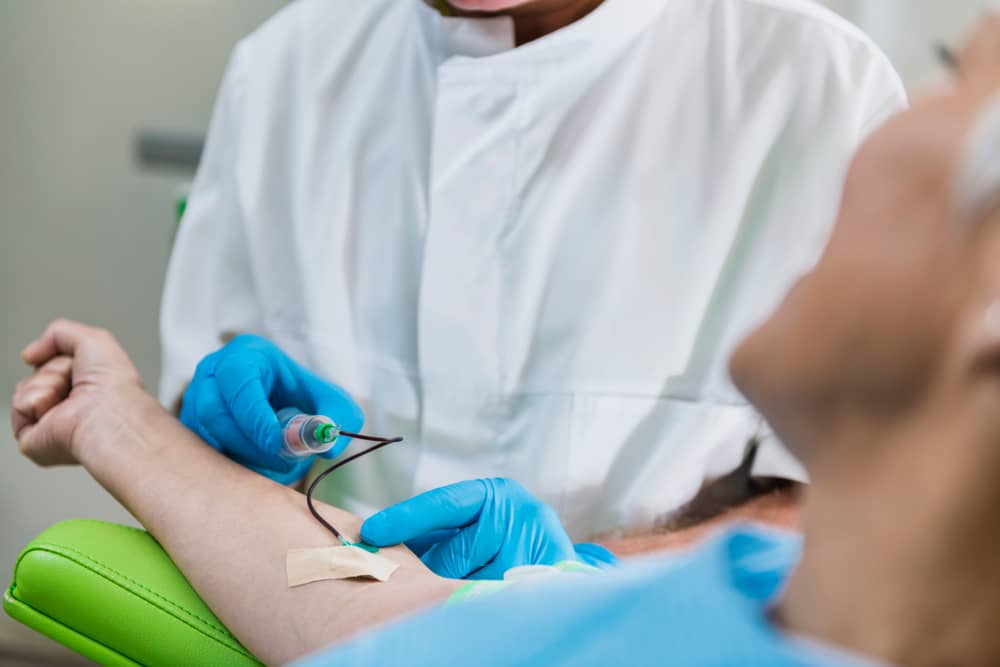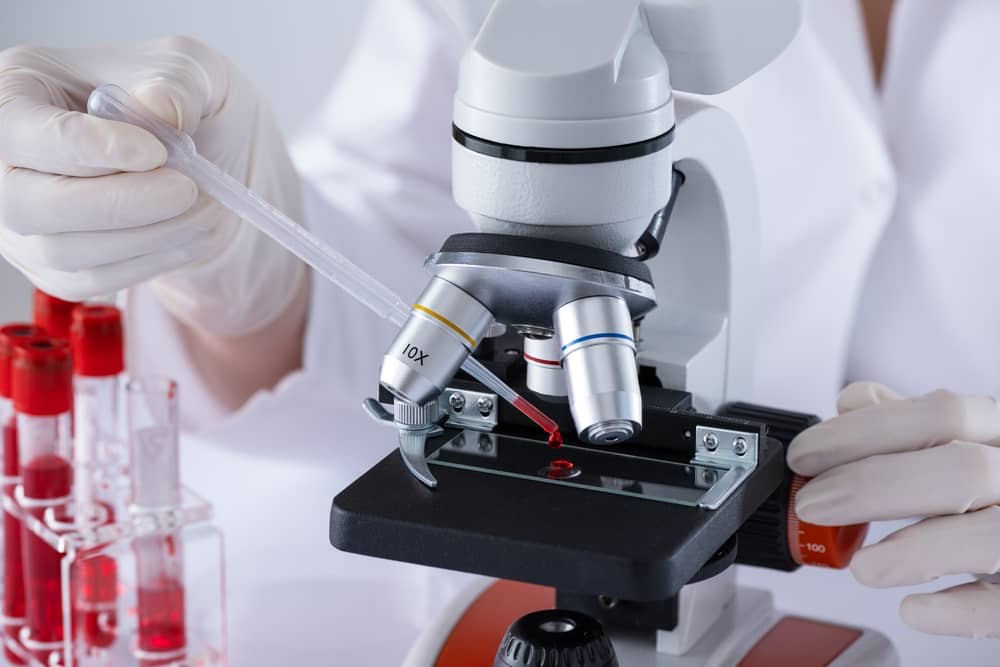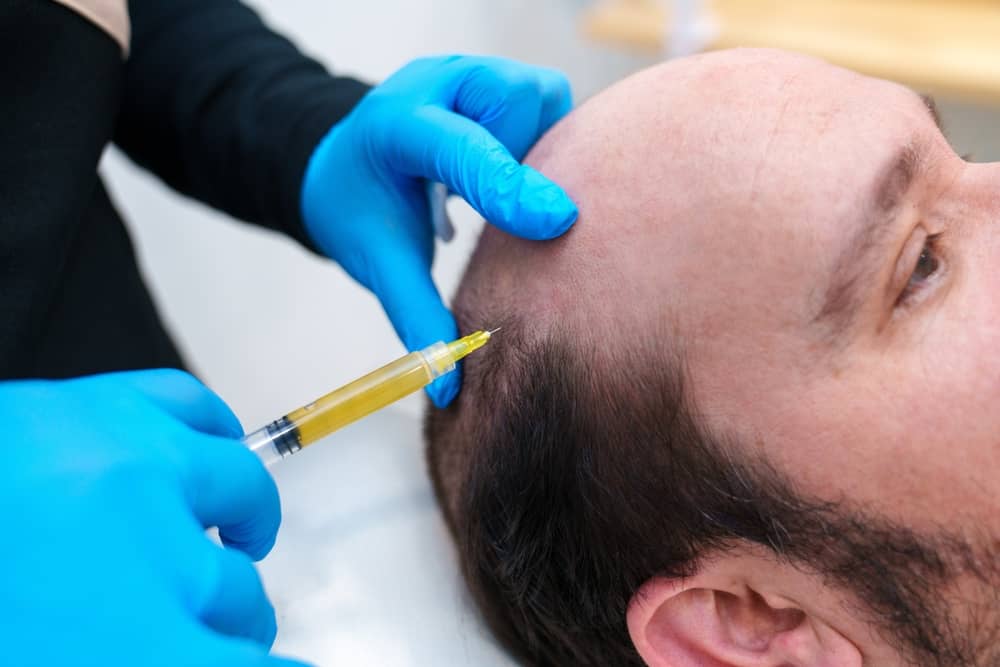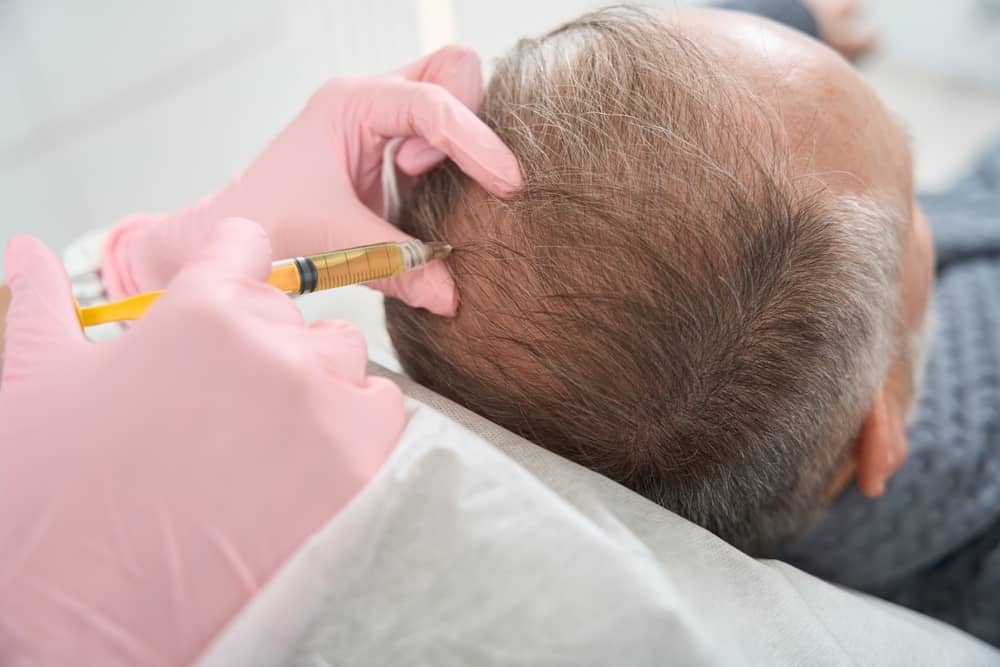What if the cure for your hair loss has been flowing through your veins all along? Discover the revolutionary PRP therapy for hair regrowth that’s changing everything.
While you’ve been desperately searching for the next miracle hair growth solution, spending hundreds on shampoos that promise the impossible and pills that deliver disappointment, there’s been a revolutionary platelet rich plasma treatment hiding in plain sight. It’s not some exotic herb from a remote mountain. It’s not a synthetic chemical concocted in a lab.
It’s your own blood.

And right now, thousands of people are experiencing something that seemed impossible just months ago: watching thick, healthy hair grow back in places where they thought it was gone forever using PRP hair restoration therapy.
The Male Pattern Baldness Crisis That’s Silently Destroying Confidence
Let’s be brutally honest about what androgenetic alopecia really does to you. It’s not just about appearance—it’s about the person you see in the mirror every morning. The way you avoid certain angles in photos. How you strategically style what’s left to cover the thin spots. The anxiety when wind threatens to expose your secret. The crushing realization that your hairline is retreating faster than your hopes of stopping it.
You’re not being vain. You’re being human.
Hair loss affects up to 80% of men and 40% of women by middle age, according to research published in the International Journal of Dermatology. Several studies have shown that PRP can be used effectively for treatment of hair loss. But here’s what they don’t tell you: conventional hair loss treatments are failing millions of people because they’re fighting the wrong battle.
The Problem With Traditional Hair Loss Treatments
The hair restoration industry has been feeding you the same tired solutions for decades:
Minoxidil (Rogaine): Keeps your scalp perpetually irritated and only works for 30-40% of users. Stop using it, and your hair falls out faster than before.
Finasteride (Propecia): Blocks hormones throughout your entire body, potentially causing side effects that can last long after you stop taking it. And it only works for men.
Hair transplant surgery: Expensive, painful, and leave permanent scars. Plus, they’re just moving hair around—not actually creating new hair.
Low-level laser therapy: Expensive devices with questionable results and no scientific consensus on effectiveness.
Here’s the shocking truth: FDA has approved oral finasteride (for men only) and topical minoxidil for the treatment of AGA. That’s it. Two treatments. For a problem affecting hundreds of millions of people worldwide.
But what if there was something else? Something that works with your body instead of against it?
The Revolutionary PRP Hair Growth Discovery Hidden in Your Blood

In 1970, something remarkable happened in the world of medicine. Hematologists—doctors who study blood—made a discovery that would eventually change how we think about healing and regeneration. Platelet rich plasma (PRP) was first described in Hematology as a small volume of plasma containing higher concentrations of platelets than those found in peripheral blood and initially used as a transfusion product for treatment of thrombocytopenia since 1970.
They found that when you concentrate the platelets from your blood, something magical happens. These tiny cell fragments, normally responsible for blood clotting, become powerhouses of regeneration. They release growth factors—natural proteins that signal your body to repair, rebuild, and regenerate tissue.
But it took over 30 years for someone to ask the obvious question: What would happen if we injected these concentrated platelets into a balding scalp for hair regrowth?
The Brazilian Pioneer Who Invented PRP Hair Restoration
In 2004, a brilliant plastic surgeon named Dr. Carlos Oscar Uebel in Porto Alegre, Brazil, became frustrated with the poor results he was seeing from traditional hair transplant procedures. The use of PRP for hair restoration was first pioneered by a Brazilian plastic surgeon, Dr. Carlos Uebel, in 2004.
Dr. Uebel had a radical idea: What if he could use the patient’s own blood to help transplanted hair grow better? He started taking blood from his patients, concentrating the platelets, and soaking hair grafts in this “liquid gold” before transplanting them.
The PRP therapy results were astounding. “Grafts fertilized with platelet-rich plasma start to grow in a few weeks,” says Dr. Uebel, associate professor of plastic surgery at Pontifícia Universidade Católicado Rio Grande do Sul in Porto Alegre, Brazil. Even better, Dr. Uebel determined that the platelet gel treatment improved their survival rate by 15 to 35 percent.
But Dr. Uebel discovered something even more exciting: You didn’t need a hair transplant at all. Simply injecting PRP into areas of hair loss could stimulate dormant follicles to start producing hair again.
The PRP Hair Loss Science That Will Make You Rethink Everything
Here’s what researchers discovered about why platelet rich plasma therapy works so dramatically well for androgenetic alopecia:
Your hair follicles aren’t dead—they’re sleeping. When it comes to hair loss, the theory is that platelets, injected deep into the scalp to reach the bottom of the hair follicle, may stimulate a specialized population of cells named dermal papilla cells, which play a critical role in hair growth.
Think of your scalp like a garden where the soil has become depleted. The seeds (your hair follicles) are still there, but they lack the nutrients to grow. PRP hair treatment is like the world’s most powerful fertilizer, delivering exactly what those dormant follicles need to wake up and start producing hair again.
The platelets in PRP contain multiple growth factors that work together like a symphony:
- Platelet-Derived Growth Factor (PDGF): Stimulates blood vessel formation to feed your follicles
- Transforming Growth Factor-β (TGF-β): Promotes tissue repair and regeneration
- Vascular Endothelial Growth Factor (VEGF): Creates new blood vessels to nourish hair roots
- Epidermal Growth Factor (EGF): Accelerates cell division and growth
- Insulin-like Growth Factor (IGF): Extends the hair growth phase
The activation of platelet α−granules releases numerous growth factors, including transforming growth factor (TGF), platelet-derived growth factor (PDGF),vascular endothelial growth factor (VEGF), epidermal growth factor (EGF), insulin-like growth factor, and interleukin-1.
The Stunning PRP Hair Regrowth Results That Are Making Headlines
The scientific evidence for PRP hair restoration is overwhelming. In one landmark study, researchers followed 20 men with male pattern baldness for two years. At the end of the 3 treatment cycles, the patients presented clinical improvement in the mean number of hairs, with a mean increase of 33.6 hairs in the target area and a mean increase in total hair density of 45.9 hairs per cm2 compared with baseline values.
But here’s the really exciting part: No side effects were noted during treatment.
Multiple studies have now confirmed these remarkable PRP therapy results. A meta-analysis from six studies (four studies were randomized controlled trials, while the other two were retrospective studies) involving 177 patients, showed a significant increase in number of hairs per cm2 after PRP injections compared to control.
Even more impressive: After that time, most of her patients – both male and female – have regrown 30% to 40% of the hair they’ve lost, according to Dr. Shilpi Khetarpal at the Cleveland Clinic.
Why Your Doctor Might Not Have Told You About PRP Hair Loss Treatment
Here’s where it gets interesting—and a little frustrating. However, lack of the FDA approval means that PRP treatments may not be covered by insurance. The FDA has only approved PRP devices for certain orthopedic uses, not specifically for hair loss. Importantly, while several PRP preparation systems are FDA-cleared for orthopedic indications, their use for hair growth is “off-label”, as no data has been submitted to the FDA sufficient to grant clearance for this indication.
But here’s what’s crucial to understand: Any use of PRP other than blood transfusion is an “off label use” which is not prohibited by the FDA regulation if performed by a physician with the intent to practice medicine.
This means qualified physicians can legally provide PRP hair restoration treatments, but insurance companies won’t pay for it because it’s considered cosmetic. This creates a frustrating situation where an effective treatment remains accessible only to those who can afford to pay out of pocket.
The PRP Hair Treatment Process: What Actually Happens

The platelet rich plasma process is surprisingly simple and takes less than an hour:
Step 1: Blood Draw – To yield PRP, blood is drawn from your arm, then spun down in a centrifuge (a machine that spins at high speeds to help separate blood components). Typically, about 30-60ml of blood is drawn (similar to donating blood).
Step 2: Centrifugation – After centrifuging, the plasma rises to the top, and the lower part of the plasma is the PRP. Sometimes, a second spin is performed to increase the platelet concentration of the plasma. This concentrates your platelets to 2-6 times normal levels.
Step 3: Injection – Your own PRP is collected, then injected into multiple areas of hair loss across your scalp. The injections are done with very fine needles at the level of the hair follicles.
PRP Treatment Schedule: The usual treatment plan involves three sessions, approximately one month apart, followed by maintenance sessions every three to six months to keep up the results.
The Surprising Truth About Who Benefits Most from PRP Hair Therapy
Not everyone is an ideal candidate for platelet rich plasma hair treatment, but the results can be dramatic for the right people. PRP therapy works better if your hair loss is recent. The earlier you catch hair loss, the more dramatic your results will be.
You’re likely an excellent candidate for PRP hair restoration if:
- Your hair loss started within the last 5 years
- You still have some hair in the thinning areas (even if it’s very fine)
- You have androgenetic alopecia (male or female pattern baldness)
- You’re not taking blood thinners
If you have an underlying disorder such as thyroid disease or lupus, you aren’t likely to have good results because these conditions will continue to cause hair loss over time.
The Investment: What PRP Hair Loss Treatment Really Costs
Let’s talk numbers. One session can cost around $1,000, with a series of three treatments needed before improvement may be seen. So you’re looking at approximately $3,000 for your initial PRP therapy series.
Compare this to:
- Hair transplant surgery: $10,000-$20,000+ with permanent scarring
- Lifetime cost of hair loss medications: $3,000-$5,000+ over 10 years
- Hair systems and wigs: $2,000-$10,000+ annually
When you see patients achieving 30-40% hair regrowth with PRP hair treatment, the return on investment becomes compelling. You’re not just buying a treatment—you’re investing in your confidence, your appearance, and your quality of life.
The PRP Hair Regrowth Timeline: When Will You See Results?
This is where platelet rich plasma differs dramatically from other treatments. Dr. Khetarpal says it takes about three months to see an improvement. However, some patients see improvements much sooner: While visible growth can be seen as early as 1-2 months, it can take as long as six months to see a benefit.
Here’s the typical PRP hair restoration timeline:
- Weeks 1-2: Minimal hair shedding may occur (this is normal)
- Month 1: Hair starts looking healthier and shinier
- Month 3: New hair growth becomes visible
- Month 6: Significant improvement in hair density and thickness
- Month 12: Peak results achieved
The key is patience. Your hair follicles are waking up from a long sleep, and that process takes time.
The Plot Twist: Why PRP Quality Matters More Than Price
Here’s something shocking that most clinics won’t tell you: Not all platelet rich plasma is created equal.
There are significant variabilities in the production of true platelet-rich plasma, including differences in platelet counts, growth factor concentrations, and other factors. Some clinics use inferior preparation methods that barely concentrate platelets above normal blood levels.
Since there is a wide range for normal platelet levels (from 150 to 450 per mcl), some PRP samples will have much higher levels of growth factors than others, and this may account for the inconsistent results often seen with this therapy.
Questions you MUST ask before getting PRP hair treatment:
- What platelet concentration does your preparation achieve?
- Do you measure platelet counts in each sample?
- What centrifugation protocol do you use?
- How many platelets are in each injection?
A reputable clinic will have specific answers to these questions and test every sample to ensure quality.
The Surprise Benefit of PRP Hair Therapy Nobody Talks About
While researching platelet rich plasma, something fascinating emerged that goes beyond just hair regrowth. Often, results with PRP can be improved when exosomes are employed adjunctively.
But here’s the real surprise: patients consistently report that PRP doesn’t just grow new hair—it dramatically improves the quality of their existing hair. Hair becomes thicker, shinier, and healthier. Many patients say their hair feels like it did when they were younger.
Why? Because PRP hair treatment doesn’t just wake up dormant follicles—it optimizes the health of all your follicles. The ability of this therapy to prolong the anagen phase of hair growth is now well established.
The Emotional Transformation: Beyond Physical Hair Restoration Results

The real magic of PRP hair restoration isn’t just measured in hair count—it’s measured in confidence regained. Patients describe feeling “like themselves again.” They stop wearing hats constantly. They’re no longer strategic about camera angles. They rediscover the joy of running their fingers through their hair.
One patient described it perfectly: “I didn’t realize how much mental energy I was spending thinking about my hair loss until I didn’t have to anymore.”
This psychological benefit is real and measurable. Studies show that successful hair loss treatment improves quality of life scores, reduces anxiety about appearance, and increases social confidence.
The Call to Action: Your Next Step in Hair Restoration
You have a choice to make. You can continue down the path of expensive shampoos, questionable supplements, and treatments that barely work. You can accept that hair loss is “just part of aging” and resign yourself to watching your hairline retreat year after year.
Or you can take action with proven PRP hair therapy.
The science is clear. The results are documented. Platelet rich plasma works. But only if you act while your follicles are still capable of responding.
Remember: PRP therapy works better if your hair loss is recent. Every month you wait is a month your follicles become more dormant and harder to reactivate.
The Bottom Line: Your Hair Loss Solution Has Been Inside You All Along
PRP hair restoration represents a fundamental shift in how we approach hair loss. Instead of fighting your body’s natural processes, platelet rich plasma therapy works with them. Instead of introducing foreign chemicals or performing invasive surgery, PRP uses your body’s own healing mechanisms to restore what you’ve lost.
PRP may serve as a safe and effective treatment option against hair loss, with studies showing that 84% of all studies reported a positive effect of PRP, 50% demonstrated a statistically significant improvement.
The evidence is overwhelming. The results speak for themselves. The only question remaining is: What are you going to do with this information?
Ready to Learn More About PRP Hair Loss Treatment?
The next step is education. Understanding your specific type of hair loss, whether you’re a good candidate for platelet rich plasma therapy, and what realistic expectations look like for your situation.
Sign up below to receive our free comprehensive guide: “The Complete PRP Hair Restoration Manual” – Everything you need to know about PRP treatment, including how to find qualified providers, questions to ask, and what to expect throughout your treatment journey.
You’ll also receive:
- Weekly hair loss research updates
- Tips for maximizing your hair growth potential
- Exclusive access to patient success stories
- Notifications about breakthrough treatments
Your email is 100% secure and will never be shared. Unsubscribe anytime.
Sources and Citations
- Paichitrojjana, A., & Paichitrojjana, A. (2022). Platelet Rich Plasma and Its Use in Hair Regrowth: A Review. Drug Design, Development and Therapy, Volume 16, 1-15. PMC8922312.
- Harvard Health Publishing. (2020, May 11). Platelet-rich plasma: Does the cure for hair loss lie within our blood? Harvard Health Blog.
- Johns Hopkins Medicine. (2023, June 9). Platelet-Rich Plasma (PRP) Injections. Johns Hopkins Medicine Health Library.
- Gentile, P., Garcovich, S., Bielli, A., Scioli, M. G., Orlandi, A., & Cervelli, V. (2015). The Effect of Platelet-Rich Plasma in Hair Regrowth: A Randomized Placebo-Controlled Trial. Stem Cells Translational Medicine, 4(11), 1317-1323. PMC4622412.
- Bosworth, T. (2025, January 16). Platelet-Rich Plasma Considered Effective but Not Approved for Hair Loss. Medscape Medical News.
- Paichitrojjana, A., & Paichitrojjana, A. (2022). Platelet rich plasma and its use in hair regrowth. Drug Design, Development and Therapy, 16, 1-15.
- Cleveland Clinic. (2020, December 22). Hair Loss Got You Down? Platelet-Rich Plasma May Regrow It. Cleveland Clinic Health Essentials.
- International Society of Hair Restoration Surgery. (2025, April 23). PRP for Hair Loss: Procedure, Benefits & Costs. ISHRS Patient Information.
This article is for educational purposes only and is not intended as medical advice. Always consult with a qualified healthcare provider before beginning any treatment for hair loss.

View comments
+ Leave a comment